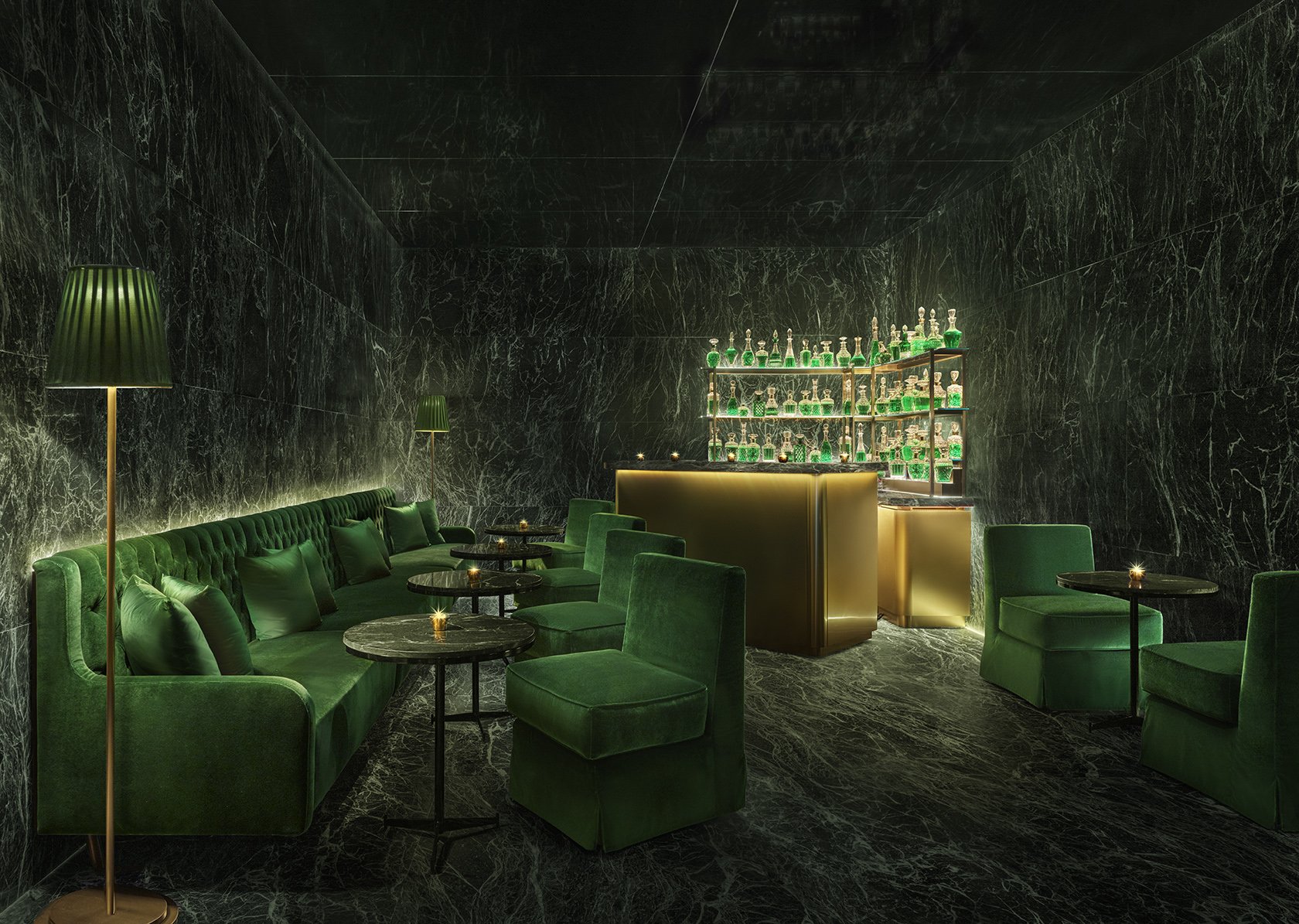How ‘Interior Narratives' are changing the boutique hotel scene.
The 1980s, hotel design saw a trend in large hotels featuring massive concrete, glass, marble, brass structures with big soaring atrium lobbies; a very compartmentalised anonymous experience. On the flip side, the alternative was the highly stigmatised, broadly unregulated bed-and-breakfasts, dotted around and booked in a Russian roulette fashion.…
The boutique hotel movement has created a fusion of the past hotel experience with a homely intimate experience. Guests wanted a much closer alignment between being in hotels and feeling like their homes .
A lifestyle crossover was born.
The London EDITION Berners Street- Marriott
The London EDITION Berners Street- Marriott
THE GUEST EXPERIENCE
Provocative, memorable, high-impact design took a far more residential feel. Hotels in general as narratives have developed felt more residential, comfortable, and critically a much deeper dive into the ‘personality’ of a brand, which introduces the term ‘the guest journey’.
It became apparent that both design and brand philosophy had to marry in a strong way, curating an immersive environment that captivates and sets the hotel establishment apart, by carving a distinct identity which will differentiate from the competition.
When guests have an exceptional experience, they become ambassadors for your brand. Spreading the word to friends, family, and online communities with positive word-of-mouth combined with repeat bookings, which translates into increased occupancy rates and higher revenue. Guests are willing to pay a premium for a hotel that offers more than just a place to sleep; they seek an unforgettable experience that enriches their lives. Download our latest Hotel Lookbook here.
The Rome EDITION Salita di San Nicola da Tolentino - Marriott International
The Rome EDITION Salita di San Nicola da Tolentino - Marriott International
The Rome EDITION Salita di San Nicola da Tolentino - Marriott International
THE GUEST JOURNEY
The service execution, the programming of the hotel and the experience delivery defines the ‘guest journey’.
But the impact of design on profitability goes beyond guest satisfaction. A carefully designed hotel maximises operational efficiency, ensuring smooth guest flow, enhancing staff productivity, and optimising the use of space. These factors contribute to cost savings and improved operational performance, further boosting profitability.
"How does design impact profitability?"
Well… here's how WOOLF translate this; a well-designed hotel attracts guests which generates positive reviews and in return fosters customer loyalty. Discover our Hospitality Portfolio.
Torno Subito, situated within the latest W Hotel - Palm Jumeirah Dubai
Torno Subito, situated within the latest W Hotel - Palm Jumeirah Dubai
SUCCESSFUL BOUTIQUE HOTEL DESIGN
Successful hotel design is guided by key principles that ensure a harmonious blend of functionality, aesthetics, and guest satisfaction, this is broken down into pillars:
Guest Flow
A well-designed hotel optimizes guest flow, ensuring smooth navigation and minimal congestion. Strategic placement of reception desks, intuitive signage, and thoughtful space planning contribute to a seamless guest experience.
Comfort and Well-being
Guest comfort should always be a priority. This involves selecting high-quality materials, providing comfortable seating, optimising lighting and acoustics, and considering factors like temperature control and air quality. See our latest discussion on this in 2024 Hotel Trends
Visual Branding
Incorporate the brand's colours, logo, and visual elements throughout the hotel's design to create a cohesive and recognisable brand presence. An example of this is our project on Belgravia House.
Montcalm East, Autograph Collection - Marriott
Montcalm East, Autograph Collection - Marriott
Personalisation
Boutique hotels leverage interior design narratives to create spaces that feel personalised and welcoming. This can involve incorporating elements that reflect the interests and preferences of the hotel's target audience, such as art installations, curated libraries, or themed rooms.
Customised Décor
Maximalism is characterised by bold patterns, colours and textures emphasising a more playful and expressive approach to design. This trend is particularly well-suited for boutique hotels that want to create a unique and memorable experience for their guests. Guests expect hotels to offer more customised décor. These can include bespoke furniture and curated art collections. Explore our recent HOMETOO project.
Storytelling
Use design elements to tell the brand's story and create a narrative that resonates with guests. This could be through thematic elements, cultural references, or historical significance.
Unique Experiences
Infuse the design with unique features or amenities that align with the brand's values and offerings. Signature architectural elements, innovative technology, or distinctive guest experiences can set the hotel apart from competitors.
Tech Time
This could include smart room controls, interactive displays, or immersive multimedia experiences that enhance guest comfort and convenience. Is got to be simple and nimble, it will have to move with the times whilst not leaving anyone behind.
Flexible Spaces
We know that most of our hoteliers want flexible, multi-functional spaces that can adapt to the changing needs of guests. This might involve modular furniture, convertible room layouts, or communal areas that can be easily reconfigured for different purposes.
Montcalm East, Autograph Collection - Marriott
Montcalm East, Autograph Collection - Marriott











